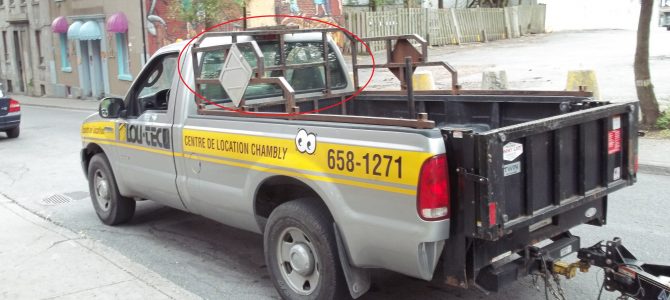The Hazardous Materials Regulations (HMR) of the USDOT/PHMSA contain many packagings and vehicles used for the transport in commerce of hazardous materials (HazMat). Some, such as the single packaging are easily explained and – hopefully – understood. Some, though superficially simple, may require a more detailed explanation when considered along with other packaging types. One of these is the term transport vehicle.
A transport vehicle is defined at 49 CFR 171.8:
Transport vehicle means a cargo-carrying vehicle such as an automobile, van, tractor, truck, semitrailer, tank car or rail car used for the transportation of a cargo by any mode. Each cargo-carrying body (trailer, rail car, etc.) is a separate transport vehicle.
|
Contact me with any questions you may have about the transportation of hazardous materials by air, highway, vessel, or rail International and Domestic Daniels Training Services, Inc. 815.821.1550 |
Okay, so let’s break down that definition and add a little explanation and context:
“…means a cargo-carrying vehicle…”
For the purposes of the HMR if it doesn’t carry cargo, USDOT/PHMSA regulations don’t apply. So, it must be cargo-carrying. Though “vehicle” isn’t defined by the HMR, it is a commonly-used term which means, a thing used for transporting people or goods, especially on land…
“…such as…”
Included in the definition of a transport vehicle are the following:
Notice that the list only includes vehicles used for transport by land (highway and rail). Can’t an aircraft or vessel used for the transport of a hazardous material be a transport vehicle? The answer is no, an aircraft or vessel does not meet the definition of a transport vehicle. Which brings us to our next point…
“…by any mode…”
Mode is also defined at §171.8 as:
Mode means any of the following transportation methods; rail, highway, air, or water.
If taken literally, a transport vehicle could be used by any mode, including air or water. This should mean that a transport vehicle could be an aircraft (air) or a vessel (water), but it isn’t. A phone call to USDOT/PHMSA provided an answer, just not a clear one. USDOT/PHMSA was not able to tell me why an aircraft or a vessel is not a transport vehicle, it just isn’t. And USDOT/PHMSA wasn’t able to tell me why, if neither an aircraft nor vessel is a transport vehicle, the words, “…by any mode…” were included in the definition, they just are. So, lacking any clear justification: USDOT/PHMSA does not consider an aircraft or vessel to be a transport vehicle.
This USDOT/PHMSA letter of interpretation clarifies the terms, motor vehicle and transport vehicle. It also states that motor vehicle cargo carrying components are considered transport vehicles. (LOI 12-0220)
|
Like this article? Subscribe to my Monthly Newsletter No marketing emails! |
“Each cargo-carrying body (trailer, rail car, etc.) is a separate transport vehicle.”
This last sentence of the definition has the most impact on HazMat transportation; particularly the hazard communication methods on a semitrailer or rail car. Since each cargo-carrying body (e.g., a trailer or rail car) is considered to be a separate transport vehicle, each must display the required hazard communication methods (i.e., placards or marks) for the HazMat it contains. The images below are of separate cargo-carrying bodies on a single vehicle.
- Each trailer is a separate transport vehicle. All together it is a motor vehicle.
- Each tank car is a separate transport vehicle
- Each cargo tank is a separate transport vehicle
|
Interested in site specific training at your site that covers this topic, and more! Ask me about my Onsite Training |



